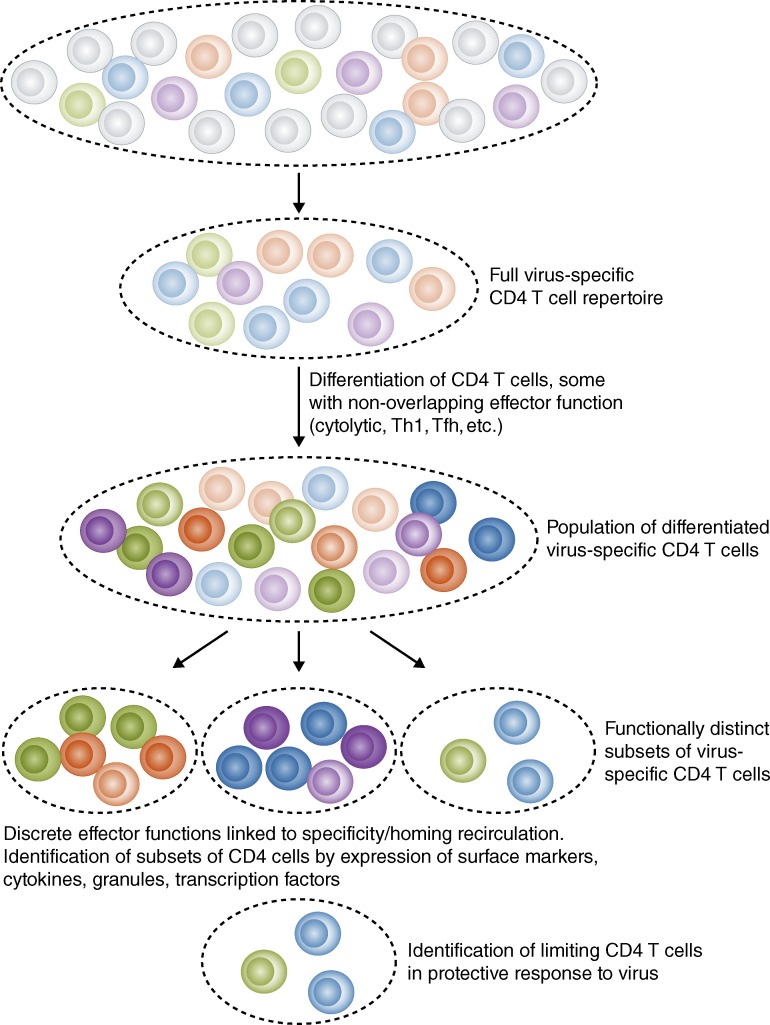Figure 1.
Many CD4 T cells expand in parallel in response to virus infection. Recent advances now allow a full and unbiased assessment of this initial CD4 T cell repertoire to viral pathogens, typically composed of many peptide specificities, indicated by different colored symbols. As CD4 T cells expand in response to infection, they differentiate into subsets that possess distinct effector functions, including cytolysis, help for antibody responses, and cytokine production (three examples of subsets from the same original CD4 T cell precursor are shown here in alternate depths of color). Some of these functional subsets may be enriched for particular epitope specificities and others may be sequestered in infected tissues. Identification of the CD4 T cell population that limits protective immunity requires robust and sophisticated assays to isolate, quantify, and distinguish virus-specific CD4 T cells.

